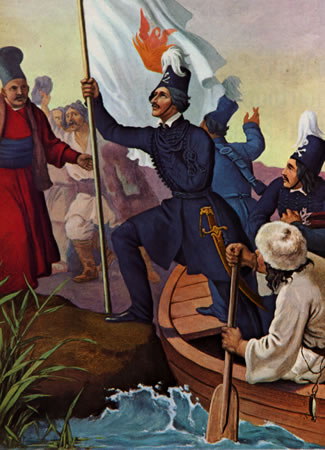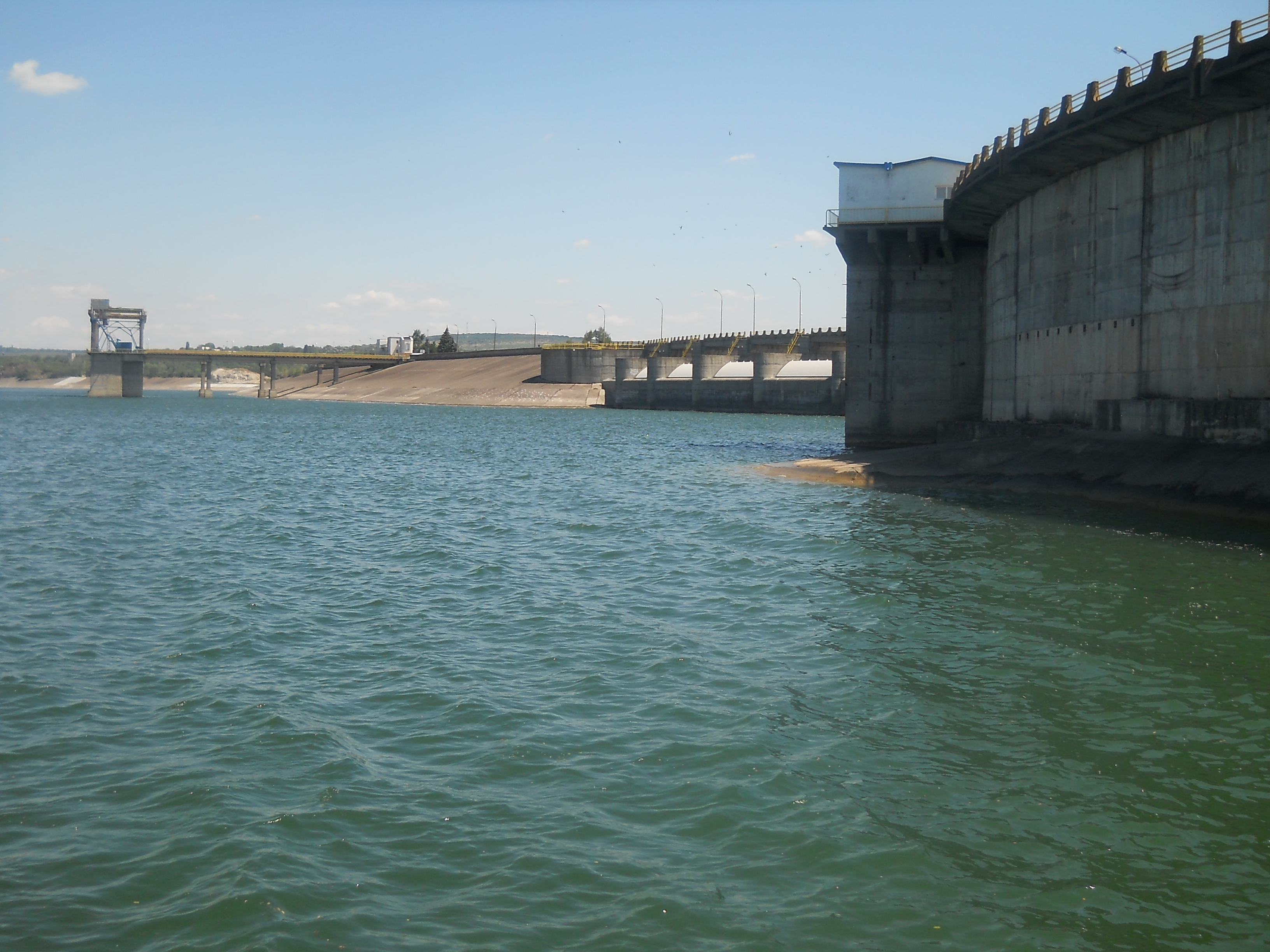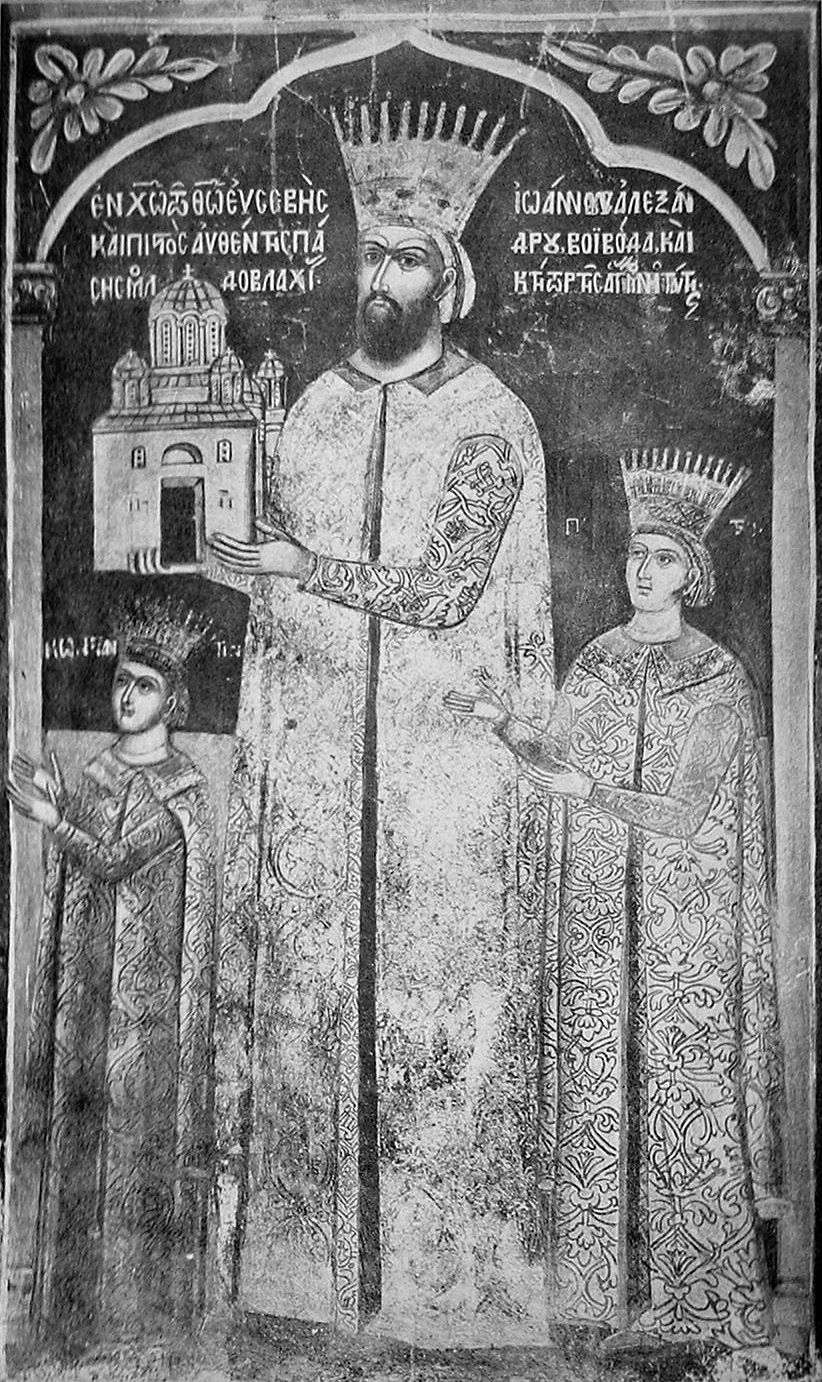|
Prut
The Prut (also spelled in English as Pruth; , uk, Прут) is a long river in Eastern Europe. It is a left tributary of the Danube. In part of its course it forms Romania's border with Moldova and Ukraine. Characteristics The Prut originates on the eastern slope of Mount Hoverla, in the Carpathian Mountains in Ukraine ( Ivano-Frankivsk Oblast). At first, the river flows to the north. Near Yaremche it turns to the northeast, and near Kolomyia to the south-east. Having reached the border between Moldova and Romania, it turns even more to the south-east, and then to the south. It eventually joins the Danube near Giurgiulești, east of Galați and west of Reni. Between 1918 and 1939, the river was partly in Poland and partly in Greater Romania (Romanian: ''România Mare''). Prior to World War I, it served as a border between Romania and the Russian Empire. After World War II, the river once again denoted a border, this time between Romania and the Soviet Union. Nowadays, for ... [...More Info...] [...Related Items...] OR: [Wikipedia] [Google] [Baidu] |
Chernivtsi
Chernivtsi ( uk, Чернівці́}, ; ro, Cernăuți, ; see also other names) is a city in the historical region of Bukovina, which is now divided along the borders of Romania and Ukraine, including this city, which is situated on the upper course of the Prut river in the Southwestern Ukrainian territory. Chernivtsi serves as the administrative center for the Chernivtsi raion, the Chernivtsi urban hromada, and the oblast itself. In 2021, the Chernivtsi population, by estimate, is and the latest census in 2001 was 240,600. The first document that refers to this city dates back to 1408, when Chernivtsi was a town in the region of Moldavia, formerly as a defensive fortification, and became the center of Bukovina in 1488. In 1538, Chernivtsi was under the control of the Ottoman Empire, and the Turkish control lasted for two centuries until 1774, when Austria took control of Bukovina in the aftermath of the Russo-Turkish War. Chernivtsi (known at that time as ) became t ... [...More Info...] [...Related Items...] OR: [Wikipedia] [Google] [Baidu] |
Ivano-Frankivsk Oblast
Ivano-Frankivsk Oblast ( uk, Іва́но-Франкі́вська о́бласть, translit=Ivano-Frankivska oblast), also referred to as Ivano-Frankivshchyna ( uk, Іва́но-Франкі́вщина), is an oblast (region) in western Ukraine. Its administrative center is the city of Ivano-Frankivsk. As is the case with most other oblasts of Ukraine this region has the same name as its administrative center – which was renamed by the Soviet Ukrainian authorities after the Ukrainian writer Ivan Franko on 9 November 1962. It has a population of Ivano-Frankivsk Oblast is also known to Ukrainians by a deep-rooted alternative name: '' Prykarpattia'' (although some sources may also consider the southern Lviv Oblast including such cities as Stryi, Truskavets, and Drohobych, as also part of Prykarpattia). Prykarpattia, together with Lviv and Ternopil regions, was the main body of the historic region of eastern Halychyna; which in the 13th century was a part of the Kingdom of ... [...More Info...] [...Related Items...] OR: [Wikipedia] [Google] [Baidu] |
Glodeni District
Glodeni District () is a district () in northwestern Moldova, with its administrative center at Glodeni. , its population was 61,900. The district consists of 35 localities, 18 communes, 16 villages and one city (Glodeni). History The oldest area in the district is the Cobani, which dates back to June 3, 1374. Other old localities include Balatina, Camenca, Cuhnești, and Iabloana, founded between 1429 and 1442. During the 15th–17th centuries Glodeni continued to develop as a trade and economic region, with a significant increase in population. In 1616, a district center was documented as Glodeni. Since the 17th and 18th centuries, the region has been fueled by wars with the Polish–Lithuanian Commonwealth and the Ottoman and Russian Empires. In 1812, the region was occupied by the Russian Empire; with the local population of Moldovans and Ukrainians, Russians constitute 22 percent of the population. After the collapse of the Russian Empire in 1917, Bessarabia decided ... [...More Info...] [...Related Items...] OR: [Wikipedia] [Google] [Baidu] |
Moldova
Moldova ( , ; ), officially the Republic of Moldova ( ro, Republica Moldova), is a landlocked country in Eastern Europe. It is bordered by Romania to the west and Ukraine to the north, east, and south. The unrecognised state of Transnistria lies across the Dniester river on the country's eastern border with Ukraine. Moldova's capital and largest city is Chișinău. Most of Moldovan territory was a part of the Principality of Moldavia from the 14th century until 1812, when it was ceded to the Russian Empire by the Ottoman Empire (to which Moldavia was a vassal state) and became known as Bessarabia. In 1856, southern Bessarabia was returned to Moldavia, which three years later united with Wallachia to form Romania, but Russian rule was restored over the whole of the region in 1878. During the 1917 Russian Revolution, Bessarabia briefly became an autonomous state within the Russian Republic, known as the Moldavian Democratic Republic. In February 1918, the Moldavian D ... [...More Info...] [...Related Items...] OR: [Wikipedia] [Google] [Baidu] |
Briceni District
Briceni () is a district ( ro, raion) in the north-west of Moldova, with the administrative center at Briceni. The other major city is Lipcani. As of January 1, 2011, its population was 75,300. History The first documentary attestation dates back to district towns June 17, 1429. Such localities: Lipcani, Larga, Mihăileni, Șirăuți are mentioned first in the period 1429–1433. In July 1429, reign of Moldova Alexander the Good Dan Uncleata had established him several villages in the region of the district today. In 1562 is first attested Briceni city under the name of the land Adicăuți, Hotin, which gave him his Despot Voda to Vartic. Lipcani Tatars in 1699 are displaced living in the city which they called, being displaced to Kamianets-Podilskyi. In 1788 Austrian military administration Briceni found in 56 households. In 1812 after the Treaty of Bucharest, Moldova is occupied by Russian Empire in the period 1812-1918 as the district is under Russian administration. ... [...More Info...] [...Related Items...] OR: [Wikipedia] [Google] [Baidu] |
Jijia
The Jijia () ( uk, Жижія, Zhyzhiya) is a river in Ukraine and the Moldavia region of Romania, a right tributary of the Prut. It rises in Ukraine at an altitude of 410 metres, flows south in Botoșani County through the town of Dorohoi and meets the Prut in Gorban, Iași County. It has a length of , of which 275 km in Romania, and a drainage area of about , of which in Romania. p. 13 Major tributaries are the rivers Sitna, Miletin and Bahlui. Tributaries The following rivers are tributaries to the river Jijia (from source to mouth): *Left: Tinca, Pârâul lui Martin (Jijia), Pârâul lui Martin, Bezerc, Putreda, Tălpeni, Săvescu, Ibăneasa, Ghițălăria, Buzunosu, Găinăria, Guranda, Gard, Mihăiasa, C ...[...More Info...] [...Related Items...] OR: [Wikipedia] [Google] [Baidu] |
Botoșani County
Botoșani County () is a county ( județ) of Romania, in Western Moldavia (encompassing a few villages in neigbhouring Suceava County from Bukovina to the west as well), with the capital town ( ro, Oraș reședință de județ) at Botoșani. Demographics As of 31 October 2011, it had a population of 412,626 and the population density was 83/km2. * Romanians – 94.1% * Romani – 1% * Ukrainians – 0.2% * Lipovans – 0.1% * Other ethnicities – 0.1% * Unknown ethnicity – 4.6% Geography * Botoșani County is situated between the rivers Siret and Prut, in the northeastern part of Romania, bordering Ukraine to the north and Moldova to the east. To the west and south it has borders with Suceava and Iași counties. * It has a total area of , comprising 2.1% of the Romanian territory. * The relief is a high plain, between the valleys of the Siret and the Prut, and the latter's affluent, the Jijia River. * It has a temperate climate, influenced by the easte ... [...More Info...] [...Related Items...] OR: [Wikipedia] [Google] [Baidu] |
Chernivtsi Oblast
Chernivtsi Oblast ( uk, Черніве́цька о́бласть, Chernivetska oblast), also referred to as Chernivechchyna ( uk, Чернівеччина) is an oblast (province) in Western Ukraine, consisting of the northern parts of the regions of Bukovina and Bessarabia. It has an international border with Romania and Moldova. The oblast is the smallest in Ukraine by area and second smallest by population. Chernivtsi was part of Romania. In 1408, when it was a town in Moldavia and the chief centre of the area known as Bukovina. Chernivtsi later passed to the Turks and then in 1774 to Austria. After World War I it was ceded to Romania, and in 1940 the town was acquired by the Ukrainian SSR. The oblast has a large variety of landforms: the Carpathian Mountains and picturesque hills at the foot of the mountains gradually change to a broad partly forested plain situated between the Dniester and Prut rivers. It has a population of 896,566 as of 2020, and its capital is the city ... [...More Info...] [...Related Items...] OR: [Wikipedia] [Google] [Baidu] |
Cheremosh
The Cheremosh River (, , ) is a river in western Ukraine, right-bank tributary of the river Prut. Description It is formed by confluence of two upper streams of the river ''Bilyi Cheremosh'' (White Cheremosh) and ''Chornyi Cheremosh'' (Black Cheremosh) near the village Usteriky (Verkhovyna Raion) and has a length of . L. Chirică Chornyi Cheremosh is 87 km long with a basin of 856 km2 and Bilyi Cheremosh is 61 km long with a basin of 606 km2. at the |
Ungheni
Ungheni () is a municipality in Moldova. With a population of 35,157, it is the seventh largest town in Moldova and the seat of Ungheni District. There is a bridge across the Prut and a border checkpoint to Romania. There is another border town with the same name in Romania (Ungheni, Iași), on the other side of the Prut River. History The first historical mention of Ungheni dates to 20 August 1462. A railway between Ungheni and Chișinău was built in 1875 by Russia in preparation for the Russo-Turkish War (1877–1878). After World War II, the rail route through Ungheni became the main connection between the USSR and Romania. Features and attractions Gustave Eiffel bridge In 1876 after the spring flooding of the river Prut, the railway bridge that linked Moldova and Romania was almost destroyed. The Railways Department invited Gustave Eiffel to Bessarabia (Moldova) to redesign and rebuild the bridge. Today, it remains a strategic structure under the supervision ... [...More Info...] [...Related Items...] OR: [Wikipedia] [Google] [Baidu] |
Ungheni District
Ungheni () is a district ( ro, raion) in the central part of Moldova, bordering Romania, with the administrative center at Ungheni. The other major city is Corneşti. As of 1 January 2011, its population was 117,400. History Villages with ancient historical credentials are Buciumeni, Busila and Ungheni, they are documented in the period 1428–1430. About noble families who ruled the territory known as follows: the 1462 Pan Bratul, Procelnic's son, reigned here. This Procelnic was Stoian, advice nobleman in the reign of Alexander the Good, and participant in the Battle of Grunwald in 1422. Other relatives of the warrior, master settlement in 1490, until the 17th century. Beginning with the reign of Vasile Lupu, his cousin, marshal Iorga, buy here parts of estates. After his death he bequeathed to the village of his sisters Alexandra and Creata. Their life in Ungheni died in the late 18th century. In 1812 the Treaty of Bucharest, Basarabia is occupied by the Russian Empire ... [...More Info...] [...Related Items...] OR: [Wikipedia] [Google] [Baidu] |
Hîncești District
Hîncești () is a district ( ro, raion) of Moldova, with the city of Hîncești as its administrative center. As of 1 January 2011, its population was 122,000. History The district has been inhabited since the Stone Age (40,000–30,000 BC). On the territory of the present localities Rusca and Anina many cemeteries and settlements pertaining to the native Getae culture (4th–3rd centuries BC) have been discovered. Localities with the earliest historical attestation are Secăreni, Leușeni, Lăpușna, and Ciuciuleni, which were first attested in the period 1420–1430. During the 15th–18th centuries, the district was part of Lăpușna. Tirgul Lăpușnei was the administrative center, headed by a pârcălab (governor). Lăpușna existed as a fair in the 14th century. A branch of the Moldovan Road passed by Lapusna, linking the economic centers of Transylvania and Poland to the North Pontic cities. The branch continued on over the Danube, in Dobruja, to Constanti ... [...More Info...] [...Related Items...] OR: [Wikipedia] [Google] [Baidu] |



.jpg)


